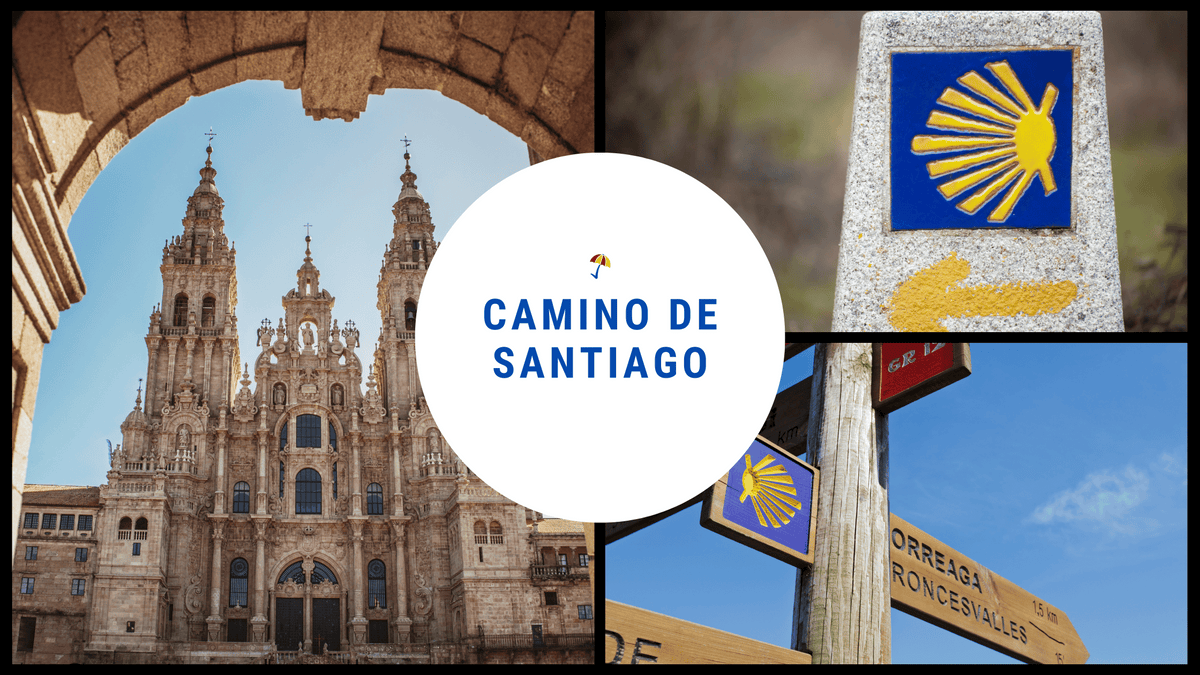
How many people walk the Camino de Santiago? | The Ultimate Camino de Santiago FAQ: Route Length, Starting Points, and Tips for Cyclists and Campers
|
|
Time to read: 7 min
|
|
Time to read: 7 min
I've noticed that lots of lovely people on social media and search engines are looking for clear info on the Camino de Santiago.
As I read more about it, I became more and more curious and a little confused, so I thought I'd make a clear summary for myself and our lovely readers, with all the most important info and numbers.
In this article, I'll tell you everything you need to know about the Camino de Santiago, one of the most famous pilgrimage routes in the world. If you're curious about anything at all, we've got your back! We'll answer all your burning questions, from how long the journey is to where it starts and ends.
We'll also delve into popular questions like whether you can cycle or camp along the way, and how many people embark on this incredible adventure each year. This guide is your go-to resource for planning a successful Camino experience, whether you're a first-time pilgrim or a seasoned traveller.
Table of Contents
The Camino de Santiago is a network of ancient pilgrimage routes that lead to the shrine of Saint James the Great in Santiago de Compostela in northwestern Spain. Saint James is buried here.
Pilgrims can start their journey from different points across Europe and end it in Santiago de Compostela. So lets check that:
The length of the Camino de Santiago varies depending on the specific route chosen.
Here are the approximate lengths of the most popular routes:
The exact length depends on the starting point and the specific route taken.
The starting point of the Pilgrim's Way to Santiago de Compostela can also vary depending on the route chosen, as there are several recognised routes leading to Santiago de Compostela.
Here are some of the main starting points for the most popular routes:
While these are the traditional starting points, many pilgrims begin their journey from various other locations throughout Europe, often starting from home or a place of personal significance.
Historically, pilgrimage has been understood as starting from home, wherever that may be.
The Camino de Santiago is mainly located in Spain, but its network of routes stretches across several European countries.
The most famous and well-travelled routes are in northern Spain, leading to the city of Santiago de Compostela in the region of Galicia, where the Cathedral and Sanctuary of Saint James the Great are located.
Here's an overview of where the Camino de Santiago routes are located:
The Camino de Santiago is a vast network of pilgrim routes across Europe, all converging on Santiago de Compostela in Spain.
Cycling is a wonderful way to complete the pilgrimage, and there are special provisions for cyclists along the routes.
There are lots of people from Germany, the UK, Portugal and France who are crazy about cycling, and I'm delighted to be able to share some information about these amazing journeys. Here are some key points to bear in mind:
Cyclist Routes:
To receive the Compostela (the certificate of completion), cyclists must ride at least 200 km on the Camino. Ponferrada is a popular starting point for cyclists. It is just over 200 kilometres from Santiago de Compostela on the Camino Francés.
Cycling considerations:
Cycling the Camino is faster than walking, but you can still enjoy the culture and spirituality.
The number of pilgrims on the Pilgrim's Way is particularly high during the Holy Years, when St. James' Day (25 July) falls on a Sunday.
For example, in the Holy Year 2021, despite the continuing effects of the COVID-19 pandemic, a significant number of pilgrims completed the Pilgrim's Way.
These figures represent those who officially complete the pilgrimage and receive the Compostela, the certificate of completion.
Many more people may have walked parts of the Camino without necessarily registering for the Compostela.
Yes, you can camp on the Camino de Santiago, but there are some important considerations and limitations:
In summary, while camping on the Camino de Santiago is possible, it requires careful planning and an understanding of local regulations.
Many pilgrims find that a mix of camping and staying in albergues works well, giving them the flexibility to enjoy the outdoors while also benefiting from the services available in towns and villages along the route.
The Camino de Santiago traditionally ends at the Cathedral of Santiago de Compostela in Galicia, north-west Spain.
Some pilgrims choose to extend their journey beyond Santiago de Compostela to the coastal town of Finisterre, about 90km (56 miles) further west. Known in Roman times as 'the end of the world', Finisterre is a symbolic extension of the pilgrimage, where pilgrims often burn their clothes or leave a memento as a final act of closure to their journey.
If you like what I've summarised here from various sources, I'd be delighted if you'd pass it on to your fellow travellers! 👇
Warm regards,
Tanya






